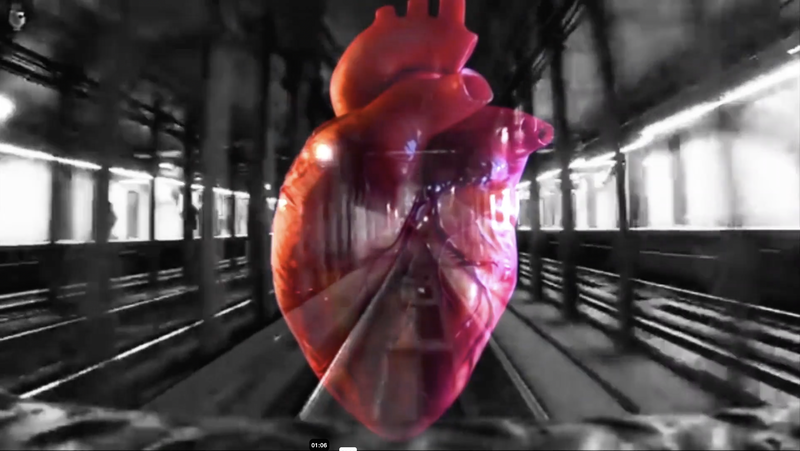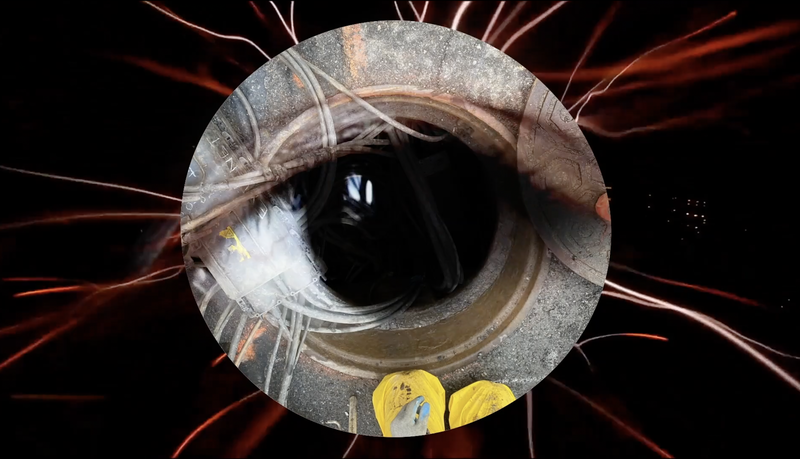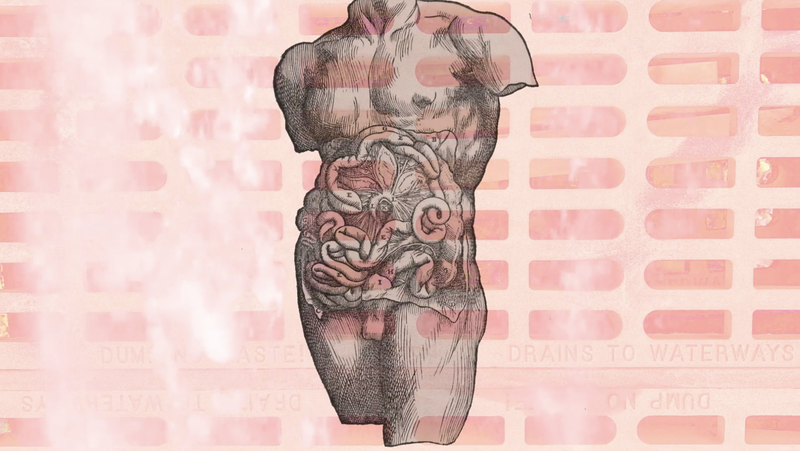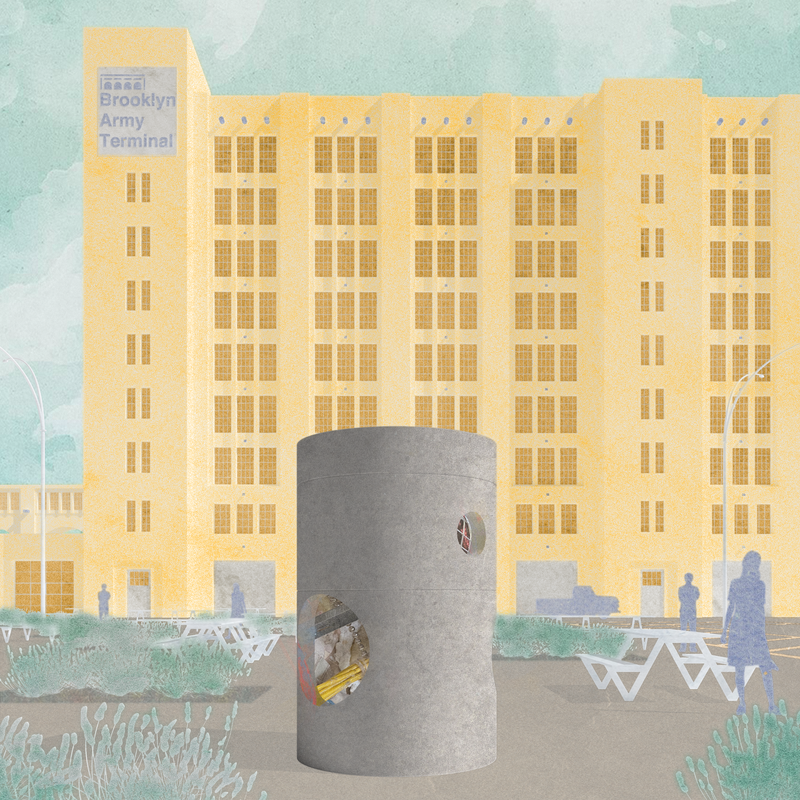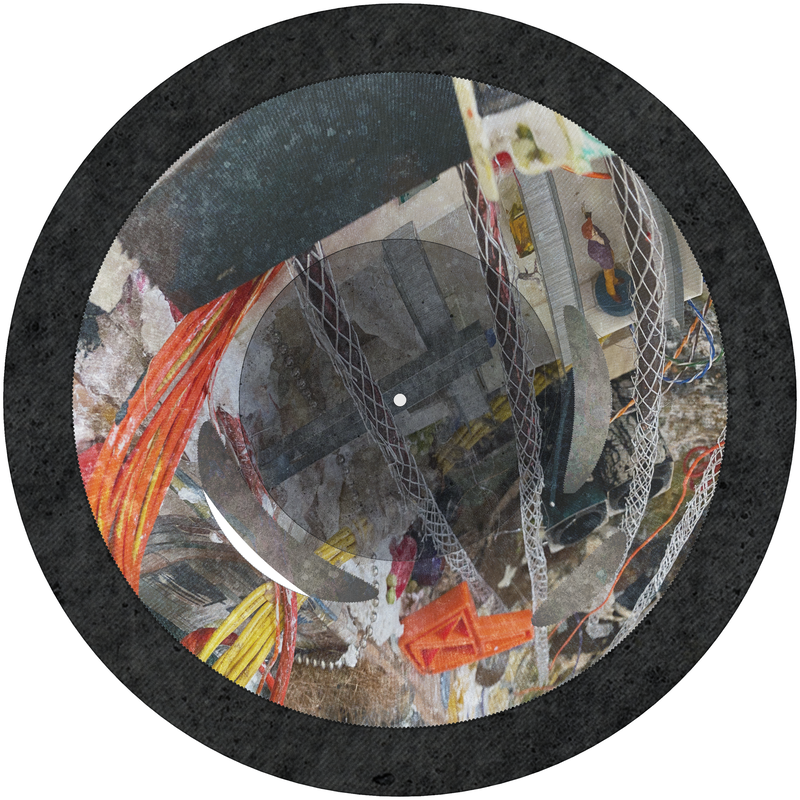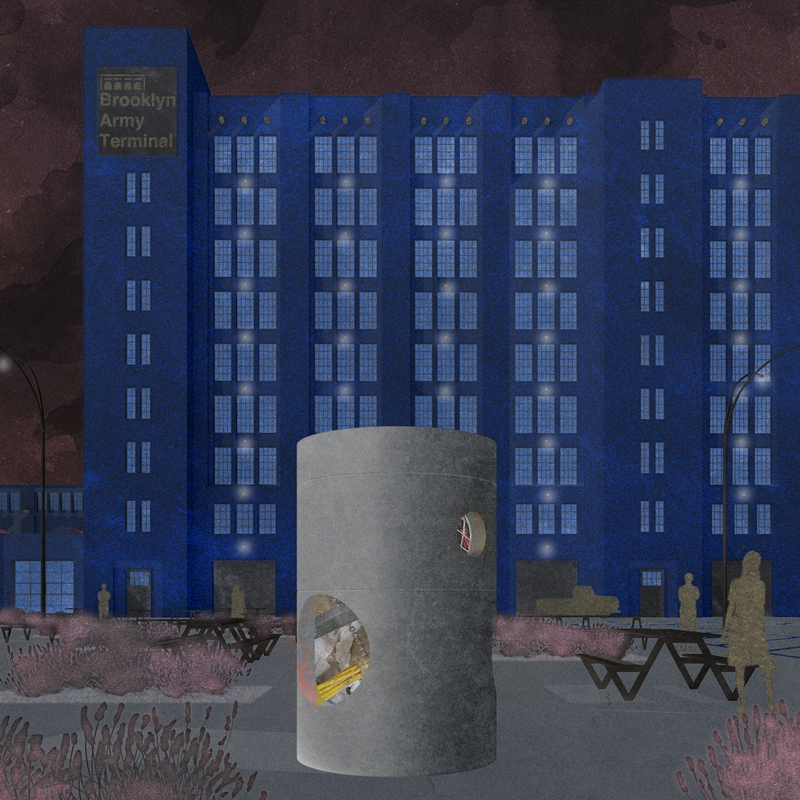"Underground Periscope"
Brooklyn Army Terminal 2022
Underground Periscope was a public art project for a National Science Foundation grant, in which I addressed the vulnerability and interconnectivity of urban infrastructure in the face of climate change and sea level rise. The project confronted the conceptual disconnect between what lies beneath the ground (intentional excavation, transportation, rock, soil, anthropogenic deposits, human artifacts, vermin, sewage, water, utilities and much more) and what we can actually see by developing a sense of play and sensory indulgence that encouraged the viewer to see differently. Taking off from one of my research stations, the outdoor sculpture was made from a repurposed and altered concrete catch basin, film projections and mirrors. Underground Periscope interpreted the urban subsurface as a living organism with its own systems.
The film projected inside the sculpture and through the openings to the outside surroundings, was made from a studio model and shot with an endoscopic camera. The model was constructed inside a cylinder tube and was made entirely out of found material, including dried food, toys, household junk and drawings.
In addition to the sculpture, the project included four additional films that explored major components of our underground system: drinking water, sewage, electricity and the subway. These film were watched by connecting to QR codes that had been placed throughout the Sunset Park neighborhood, on urban objects that related to the subject--storm drains, fire hydrants, subways and electrical manhole covers. They can be watched by linking to the Vimeo suite above and are available in Mandarin, Spanish and English.
The Project
The Unification for Underground Resilience Measures (UNUM) is part of the Civic Innovation Challenge, which is a collaboration of the National Science Foundation, Department of Energy Vehicle Technology Office, Department of Homeland Security Science and Technology Directorate and Federal Emergency Management Agency.
The importance of extreme events from climate change, weather, and accidents continue to have critical impact on infrastructure. Underground infrastructures are interconnected with one another, as well as with above ground infrastructure. These interdependencies often have cascading impacts on electric power, water, transportation and communication, resulting in extreme social and economic impacts. Increasing community resilience depends upon identifying underground infrastructure data and data sharing. Such underground infrastructure data are not readily known, available, or interoperable. The UNUM project provides a collaborative mechanism for data sharing among government, industry, utilities, and community groups with different data security requirements, capable of being brought together on a common basemap for integration and analysis. Two pilot areas are used within New York City, midtown East (Manhattan) and Sunset Park (Brooklyn), contrasting in the types of underground conditions, stakeholders, and demographic and economic diversity.
Brooklyn Army Terminal 2022
Underground Periscope was a public art project for a National Science Foundation grant, in which I addressed the vulnerability and interconnectivity of urban infrastructure in the face of climate change and sea level rise. The project confronted the conceptual disconnect between what lies beneath the ground (intentional excavation, transportation, rock, soil, anthropogenic deposits, human artifacts, vermin, sewage, water, utilities and much more) and what we can actually see by developing a sense of play and sensory indulgence that encouraged the viewer to see differently. Taking off from one of my research stations, the outdoor sculpture was made from a repurposed and altered concrete catch basin, film projections and mirrors. Underground Periscope interpreted the urban subsurface as a living organism with its own systems.
The film projected inside the sculpture and through the openings to the outside surroundings, was made from a studio model and shot with an endoscopic camera. The model was constructed inside a cylinder tube and was made entirely out of found material, including dried food, toys, household junk and drawings.
In addition to the sculpture, the project included four additional films that explored major components of our underground system: drinking water, sewage, electricity and the subway. These film were watched by connecting to QR codes that had been placed throughout the Sunset Park neighborhood, on urban objects that related to the subject--storm drains, fire hydrants, subways and electrical manhole covers. They can be watched by linking to the Vimeo suite above and are available in Mandarin, Spanish and English.
The Project
The Unification for Underground Resilience Measures (UNUM) is part of the Civic Innovation Challenge, which is a collaboration of the National Science Foundation, Department of Energy Vehicle Technology Office, Department of Homeland Security Science and Technology Directorate and Federal Emergency Management Agency.
The importance of extreme events from climate change, weather, and accidents continue to have critical impact on infrastructure. Underground infrastructures are interconnected with one another, as well as with above ground infrastructure. These interdependencies often have cascading impacts on electric power, water, transportation and communication, resulting in extreme social and economic impacts. Increasing community resilience depends upon identifying underground infrastructure data and data sharing. Such underground infrastructure data are not readily known, available, or interoperable. The UNUM project provides a collaborative mechanism for data sharing among government, industry, utilities, and community groups with different data security requirements, capable of being brought together on a common basemap for integration and analysis. Two pilot areas are used within New York City, midtown East (Manhattan) and Sunset Park (Brooklyn), contrasting in the types of underground conditions, stakeholders, and demographic and economic diversity.
| unum_grant_february_newsletter.pdf | |
| File Size: | 830 kb |
| File Type: | |
